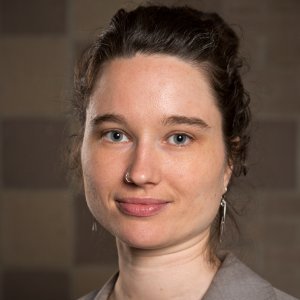I had the pleasure of joining a recent, open-ended panel discussion about alternative models for the arts, at the Dance/NYC Junior Committee‘s meeting on April 7th. The group had invited a few of us with different backgrounds and experience to share our perspectives on sustainability and the arts. I was there because for years I’ve been walking the line between being a dancer, an arts manager, and now, a student of sustainability, nearing graduation from the Bard MBA in Sustainability in May. The other two guests were Raja Feather Kelly, a creator, performer, and arts manager who has done fantastic work with the likes of David Dorfman Dance, Zoe | Juniper, Reggie Wilson and others, on top of his own career as an art-maker; and Eric Ho, the founder of miLES, a civic startup that opens storefronts to possibilities by activating urban neighborhoods for pop-up entrepreneurship, for example, providing alternative spaces for dance performances and events.
Our conversation was fluid, but we kept cycling back to a few key themes. We hadn’t defined any particular challenges to address, but it was clear as we spoke that funding and presenting work (presenting, in this context, refers to the practice of venues hiring artists for a fee, to present their work) were key issues for everyone around the table, especially since the economic landscape in both arenas has been changing. There are lingering recessionary effects on our community, as well as changing funder priorities on many levels, which seem to be contributing to more funds being directed toward presenters. The idea is that presenters will use those funds to provide reasonable fees to the artists they hire. However, it also feels like the fees from these presenters are on the decline, and we discussed the fact that the “ease” of crowd funding may be leading presenters to put the onus on artists to raise their own funds, rather than affording them the commissioning and presenting fees that they once could. An added factor may be that, as ever, the population of performing artists and creators is growing, so every year more artists are competing for the same, or shrinking, pools of funds and opportunities to be presented.
As the group delved into this discussion, we all acknowledged that there are myriad ways to approach these challenges. And that there can’t be one single solution. Raja posed an important question early on: what does it mean to be an artist in this time? This, to me, is the crux of the conversation. Beyond the microeconomic challenges described above, we are also at a fascinating point in history, with enormous global changes occurring more rapidly than ever before. Innovation in art is as prominent as in any other area, and while we continue to build on our past, we also strive to find new ways of commenting on the world around us.
One response to the challenges of arts funding that we all acknowledged is the sharing, or collaborative, economy. The dance community is incredibly self-supporting. Dancers attend each others’ performances, choreographers share dancers with one another and work around each others’ rehearsal schedules, and we all donate to each others’ crowdfunding campaigns and “like” each others’ Facebook posts to no end. I believe that this sharing–already so embedded in our way of life as artists–could be formalized, perhaps through peer-to-peer lending networks or a greater shift toward cooperative action.
There are a handful of groups that have formalized alternative models with some success. A cooperative theater company, Immediate Medium, supports more than 30 individual artists’ work through one larger organizational structure; Wow Cafe Theatre, another collective theater company, coined the term “sweat equity” to describe their shared efforts in putting on performances; and of course, umbrella organizations like the Field and Fractured Atlas have been around for decades, providing fiscal sponsorship and administrative support to individual artists in exchange for an annual membership fee.
We may not have walked away from our meeting with any one solution to the arts world’s problems, but it was incredibly heartening to know that the community as a whole is talking about these issues. Working for a small nonprofit or as an individual artist on your own can be an isolating experience, and it’s important to remember that we are part of a larger community. Collectively, we feel the great opportunity and urgency to keep this dialogue alive, and keep pushing for positive change.
Written by Sarah Bodley BardMBA ’15
